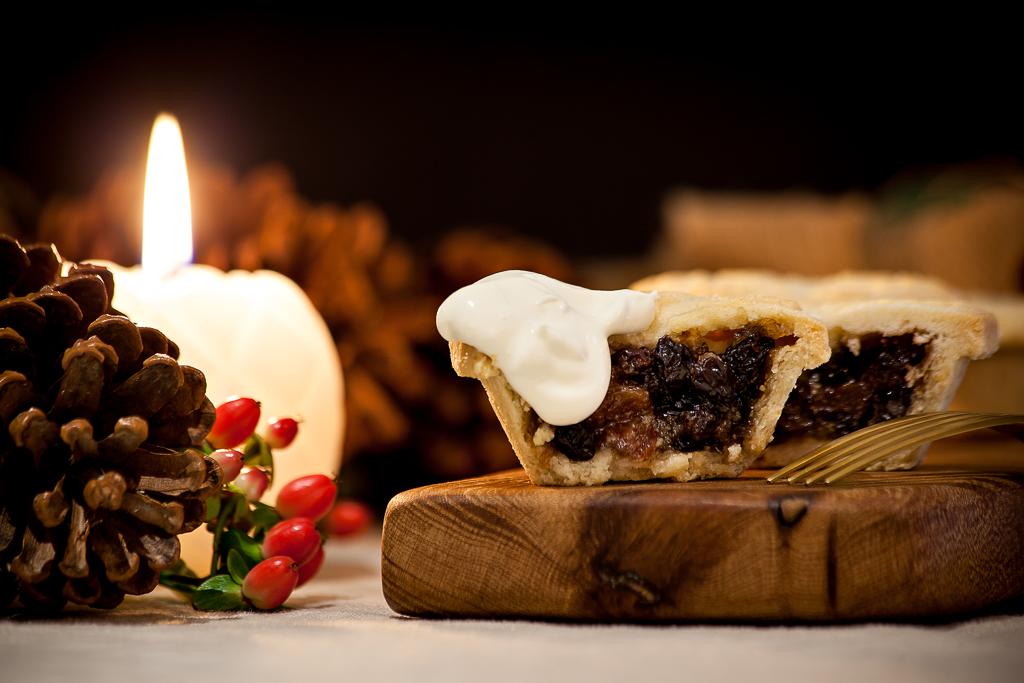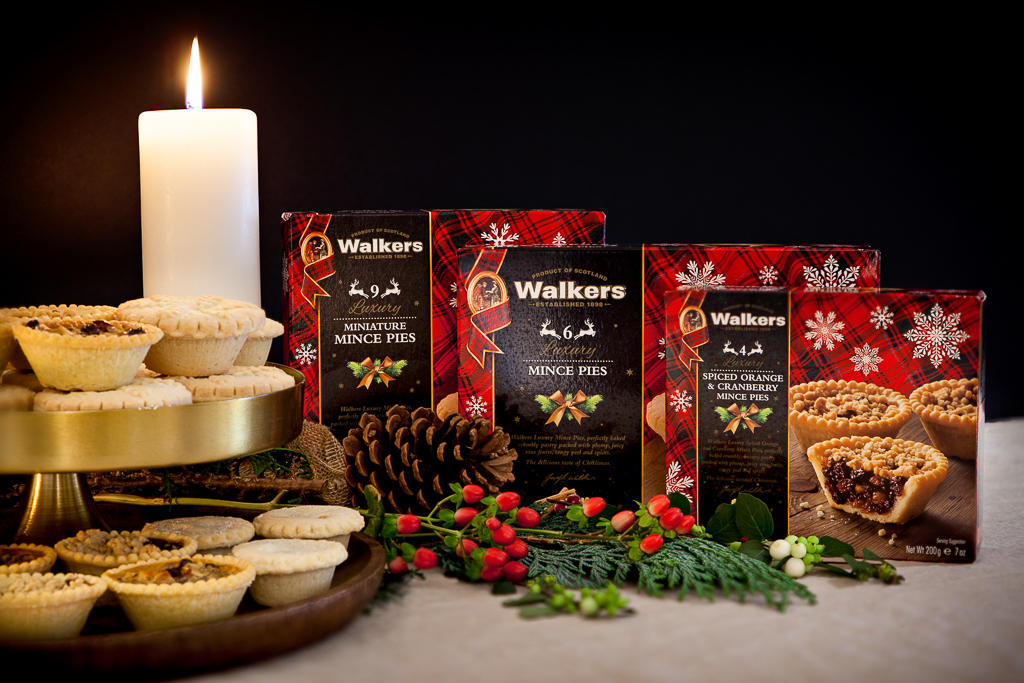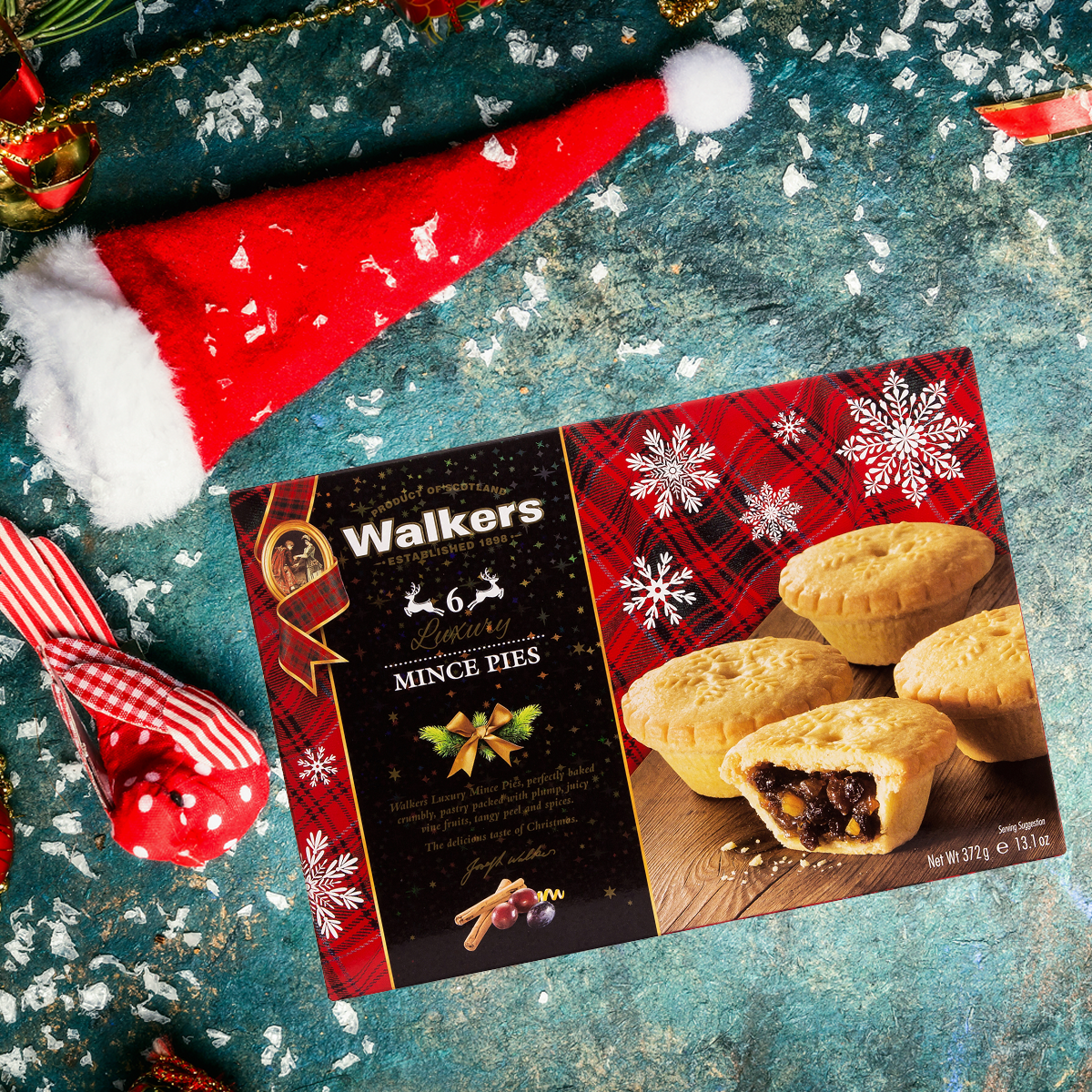The History of Mince Pies
Posted by Michael Mortimer on 14th Dec 2016
Decorated trees, snow men, mince pies - there are some things that just define Christmas. But how is it that a meaty pudding from the Middle Ages has come to play such a central role in our modern Christmas celebrations? Let’s explore the history of mince pies – maybe while biting into a freshly warmed Walkers mince pie of your own?
Mince pies throughout history
For hundreds of years the delicious mince pie has been enjoyed as a tasty, warming and filling treat - early on as a main dish, now most often to finish off a meal or to serve up as a treat. Warm, spicy mincemeat and the crisp pastry crust complement each other, and also go beautifully with a spoonful or two of whipped cream or a cold scoop of vanilla ice cream. But that’s not always been the case.

The reason mincemeat is called meat is because that’s exactly what it used to be: most often mutton, but also beef, rabbit, pork or game. Mince pies were first served in the early middle ages, and the pies were quite sizeable, filled with a mixture of finely minced meat, chopped up fruit and a preserving liquid. Mincemeat originally came about as a good way of preserving meat, without salting, curing, smoking or drying it.
In 1413, King Henry V served a mincemeat pie at his coronation. Henry the VII was fond of the meaty Christmas pie as a main dish, filled with minced meat and fruit. Mince pies have been known under several names over the years. Christmas pyes indicate their popularity at this time of year, shrid pies refer to the shredded suet and meat, crib cakes which allude to baby Jesus in his crib, and wayfarer’s pies, as they were a traditional treat served to travelling visitors. They have been referred to as mince pies in literature by countless dignitaries and important historical figures.
Today’s mince pies bear little resemblance to the early versions, but as the recipes, methods and ingredients available have developed over the years, we have ended up with a tasty treat using the finest ingredients, made in the same way it has been for years – but quite a difference from the original recipes driven more by necessity than by delight. The same can be said for shortbread. The sweet, crumbly version that Walkers has made since 1899 is certainly traditional, but the original shortbreads would be a far cry from the delicious treat available today. Read more about the history of shortbread, or tuck in to a historic treat by ordering your Christmas favourites here!
Traditions, folklore and superstitions
As with many traditional recipes, especially the ones we make and enjoy around big holidays or life events, mince pies are steeped with tradition and customs. Mincemeat would often be made on stir-up Sunday along with the Christmas pudding, the last Sunday before Advent. (As a side note, did you know the Christmas pudding also originally had meat in it?) Stirring the mincemeat was quite an event, and English tradition dictates that it should only be stirred clockwise. Stirring the mincemeat anti-clockwise would lead to bad luck and poor fortune in the coming 12 months. To spread the joy, it was tradition in England that each member of the family gave the mixture a stir, while making a wish. And if you wanted to be ensure good health and happiness in the upcoming year, you should eat one mince pie every day for the Twelve Days of Christmas, from Christmas Eve until the 5th of January. Make sure you buy a whole case of mince pies to ensure everyone a happy 2017!

The reasons mince pies are so intricately linked with Christmas is complex. With its original content of meat and fats, it was superb for eating in the lean, dark winter months. A warm mince pie would feed you well and keep you happy as the storms raged outside the window! The trio of spices used, nutmeg, cloves and cinnamon, is said to be symbolic of the gifts given to the Baby Jesus by the three wise men in Bethlehem. Originally, mince pies were often made in an oval shape, reminiscent of the crib in the manger where Christ was born, while the top represented the cloth he was swaddled in. Later on, different shapes became ways of showing off the skill of the best pastry makers, who would create intricate mince pies with stars, crescents, hearts, flowers and sugar knot gardens.
Mince pies today

It’s been a while since meat featured in the commercial sweet and spice mince pie treats we know and love. Today, the Luxury Mince Pies made by Walkers are filled with a warming spiced fruit mix with plenty of currants, sultanas, apples and candied peel. There's no meat in our mince meat pies and all our mince pies are suitable for vegetarians, and encased in the best quality shortcrust pastry, with just the right level of crumbliness. There’s also a mini mince pie version available, which are a bite-sized treat for canapé style desserts. And if you want to try something slightly different, the uniquely flavoured Orange and Cranberry Mince Pies are going down a treat, filled with plump cranberries, tangy orange peel, juicy vine fruits and warming spices.
It is still a keen tradition that children leave out mince pies for Father Christmas by the fireplace, often with a glass of whisky or brandy – and a carrot for Rudolph. (Read more about typical gifts for Santa around the world in this blog piece.) Share the joy of mince pies with everyone!
Enjoy your mince pies over Christmas!
Happy holidays from all of us at Walkers Shortbread.
- The Independent: http://www.independent.co.uk/life-style/food-and-drink/features/sweet-delight-a-brief-history-of-the-mince-pie-6270572.html
- Wikipedia: https://en.wikipedia.org/wiki/Mincemeat and https://en.wikipedia.org/wiki/Mince_pie
- BBC: http://www.bbc.co.uk/news/magazine-17610820
- Jamie Oliver: http://www.jamieoliver.com/news-and-features/features/stir-up-sunday-christmas-puddings/
- The Express: http://www.express.co.uk/life-style/food/629261/mince-pies-10-ten-facts-you-didn-t-know-festive-treat
- The Telegraph http://www.telegraph.co.uk/foodanddrink/10476667/Potted-histories-mince-pies.html
 UK
UK US
US